Going South from the Zona Cafetera, the number of tourists is greatly reduced, especially as distances are greater from the major population centres of Bogotá and Medellín and international tourists stick to the arc between Tayrona and the Zona Cafetera. This is a real shame for the local population in this part of the country, as it contains some of Colombia’s most beguiling landscapes, its major archaeological sites and one of its prettiest colonial towns in Popayán.
Our first destination was Colombia’s third city, Cali, which is famous for its salsa music and one of the most diverse populations in the country. Cali’s climate at around 25 to 28 degrees, together with regular evening breezes, is one of the moist pleasant in the country. The city is in the centre of a very productive agricultural regions and is the only major city directly connected to the Pacific Coast.
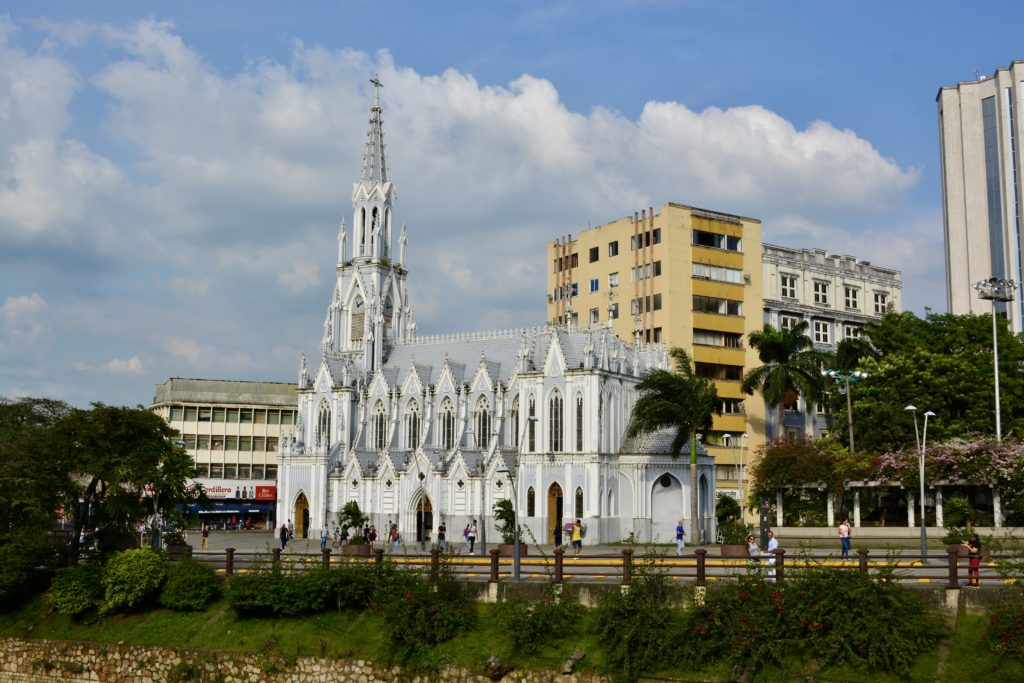
Since our previous visit the city have pedestrianised the river front area, which now makes a pleasant open space with the park on the other side of the river. Cali has a number of old churches and a gothic style church modelled on the one in Ulm, Germany that looks a bit like a wedding cake. While we were there the old San Franciscan church suffered a collapse of one of its cloister walls.

At the other side of the River Cali is an upmarket area full of bars, restaurants and boutique shops and comes to life in the evening.
From Cali we took the bus south to the university city of Popayán. The city has been well reconstructed from a devastating earthquake and most of the buildings all complement each other in both style and white paint. The main square has been fully pedestrianised and acts as a pleasant centre of the city where people come to relax and meet friends.
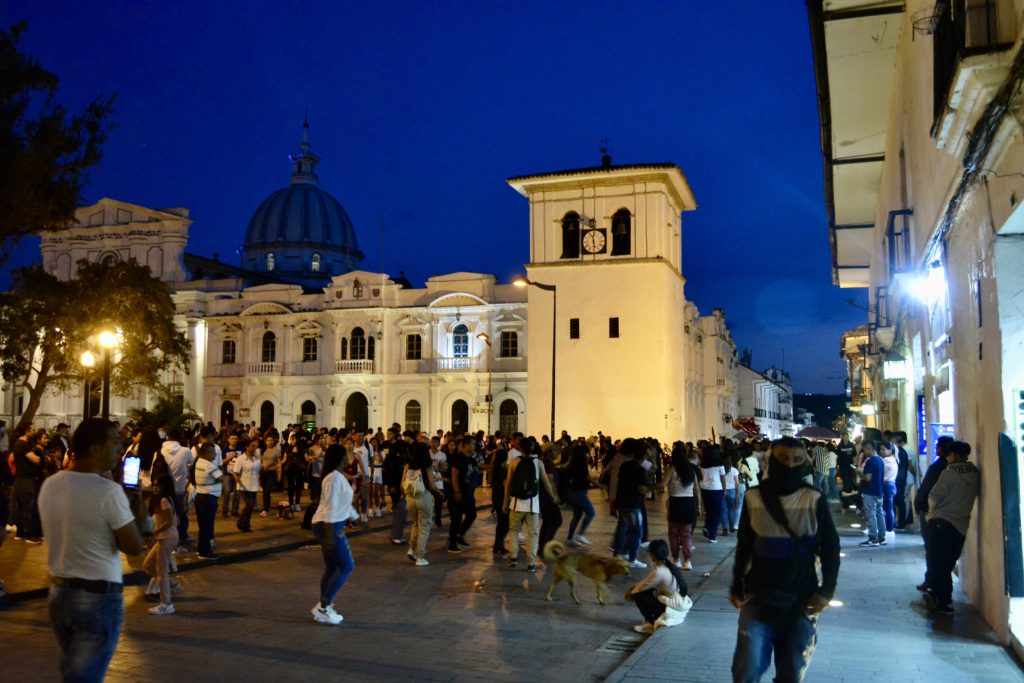
We were in Popayán for the first round of the presidential election, so there was a visible security presence, but everything seemed to be well managed and we saw no evidence of any trouble and the central polling station we saw looked safe and secure. With the election, coupled with the small number of tourists, the city was very quiet. Our nice hostel Hotel Colonial Popayán had 25 rooms, but only one other paying guest during our time in Popayán.
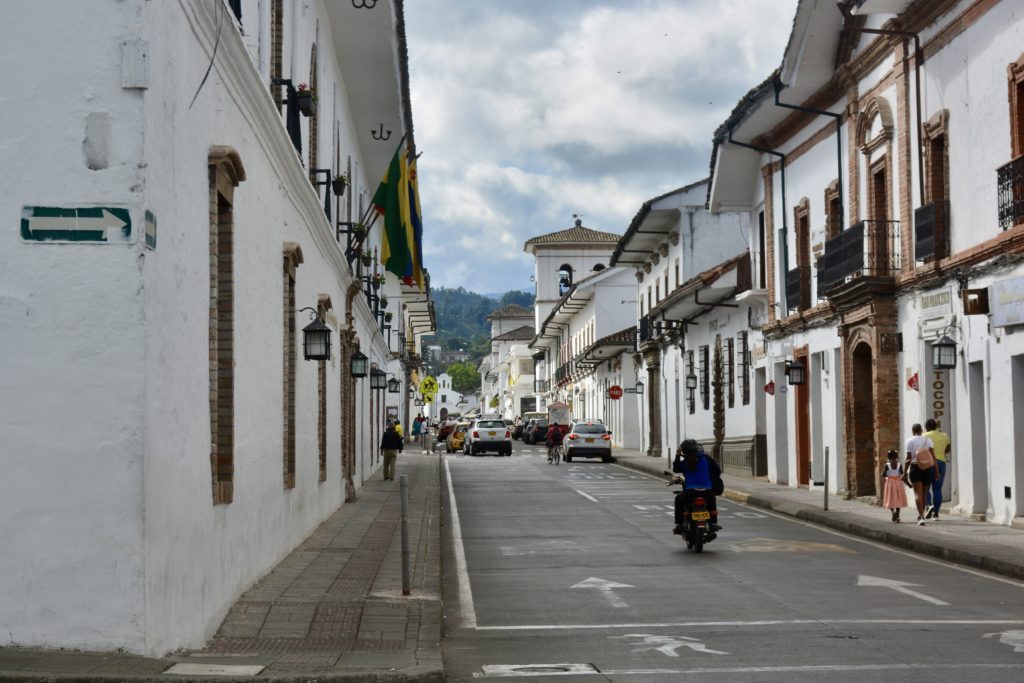
Popayán also has a reputation for some good food and we found a good Italian restarant, Restaurante Pizzarera Italiano, rated the best on TripAdvisor, and also a good parilla restaurant, La Cosecha Parrillada Centro near the main square.
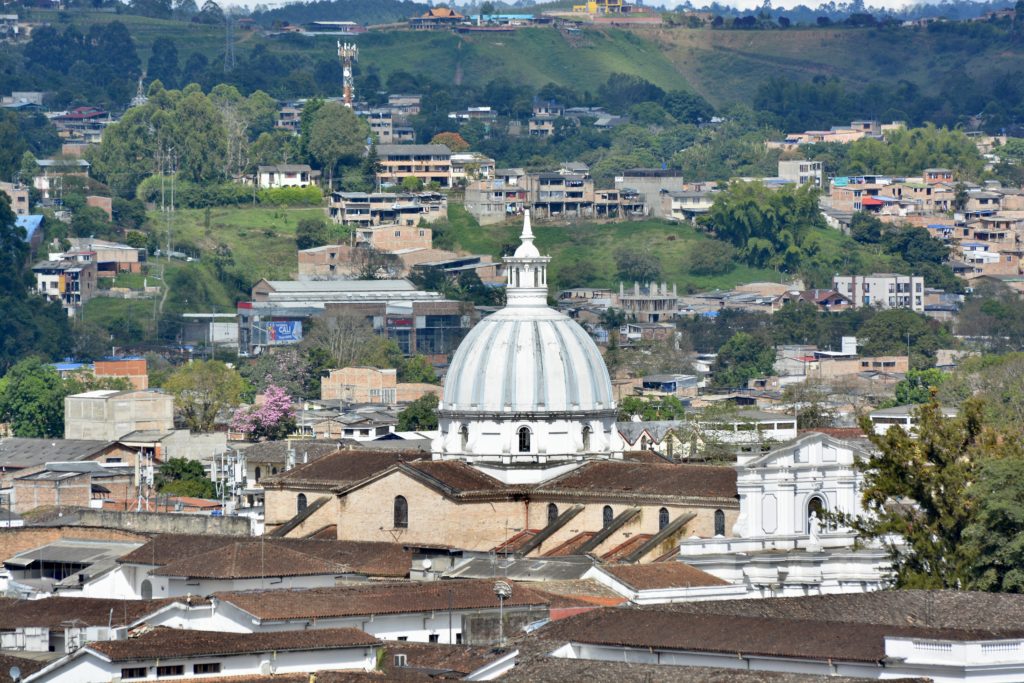
Just outside the centre of town is the Pirámide El Morro de Tulcán which offers some fine views over the city and the surrounding countryside. The many churches and consistent white paint of the many houses and shops shows off Popayán as well constructed and integrated colonial town.
From Popayán we took the bus across the cordillera to Colombia’s premier archaelogical site, San Augustín. The road crosses the Puracé National Park and rises above 3,000 metres. The Park is the natural source of three of Colombia’s principal rivers, the Magdalena, the Cauca and the Caquetá. Through the park the road is unmade so is fairly rough. Also going through the National Park there is often a lot of rain, or you end up simply passing through the clouds. Notwithstanding the state of the road and the weather, the countryside is very spectacular. It is possible to visit the National Park, with permission of the local indigenous population that currently manage it.
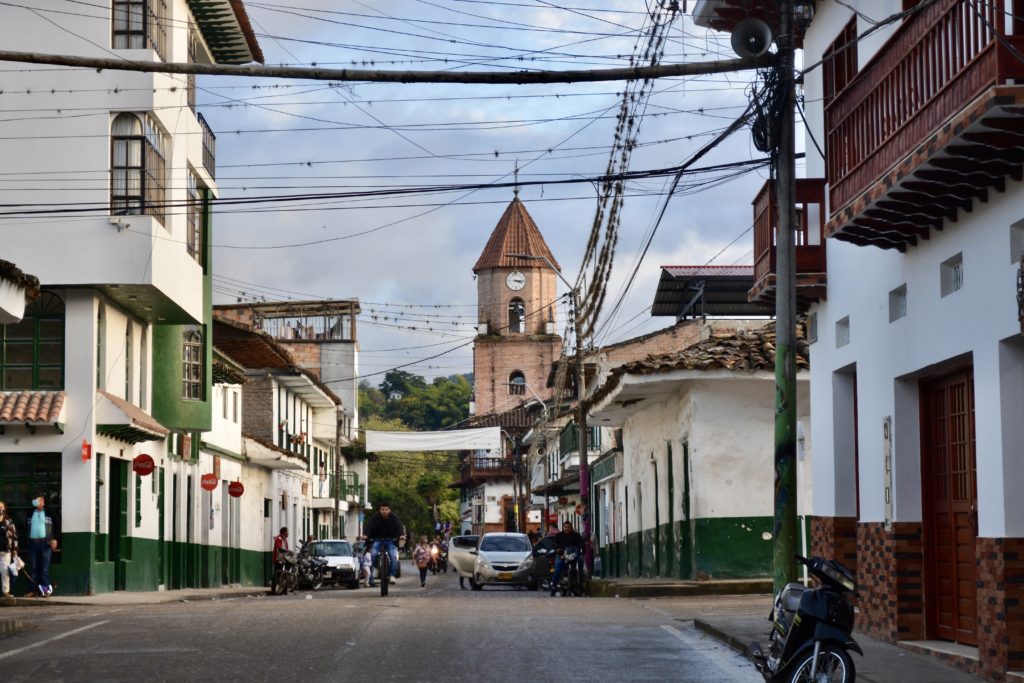
The roads improve once through the National Park and it passes down into San Agustín. We first visited San Agustín in 1989 when it was a very small and remote settlement. Since then the town has grown a fair bit and following the granting of UNESCO World Heritage Status in 1995 has become an important cultural destination in Colombia. However since the pandemic, visitor numbers have fallen off a cliff, so today is an ideal time to visit one of Colombia’s and indeed South America’s premier archaeological sites as you will have the place pretty much on your own.

Surprisingly for such an important archaeological site, very little is known of the people that built the statutes and what then happened to them. Essentially most of the statues date from around 300 BC to around 900 AD when everything seemed to disappear. Unlike many of the early cultures in Peru and Bolivia, the San Agustín culture was not absorbed into the Inca society.
To visit the various sites, at least two full days are required. First we went on a group tour of the outlying sites, organised by Cristian at Tour Macizo, who was excellent throughout and thoroughly recommended. The tour takes you to Alto de las Piedras, where there are a number of well preserved statues including the important double headed female statue.
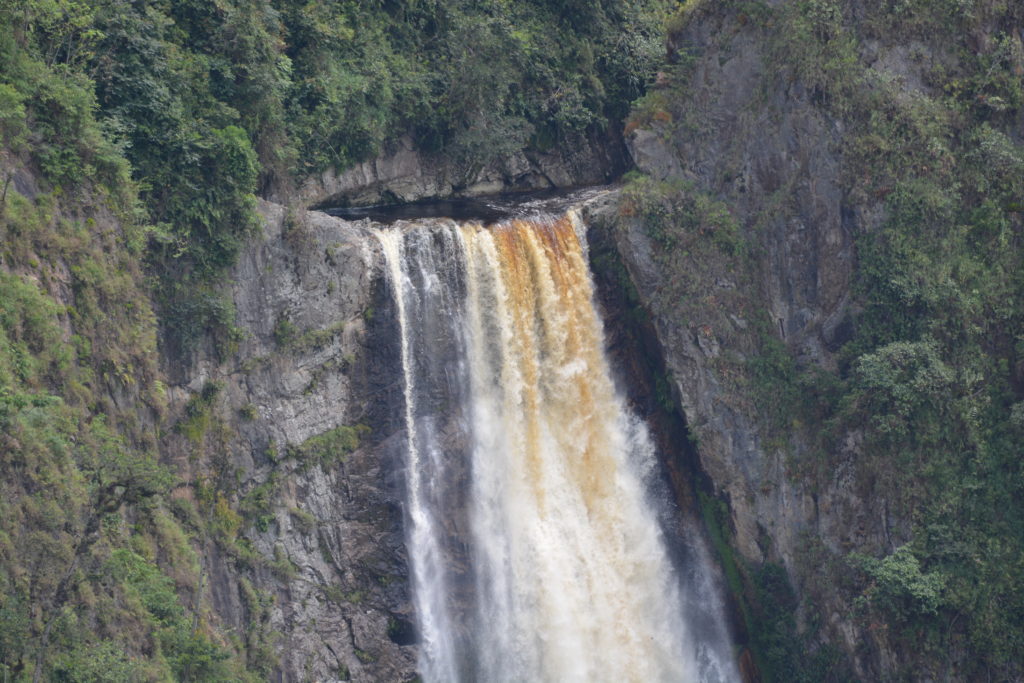
From there the tour took us to the Salto de Bordones waterfall on one of the principal tributaries of the Magdelana River which have a drop of 400 metres surrounded by spectacular countryside of coffee bushes interspersed with other fruit trees and also fields of sugar cane.
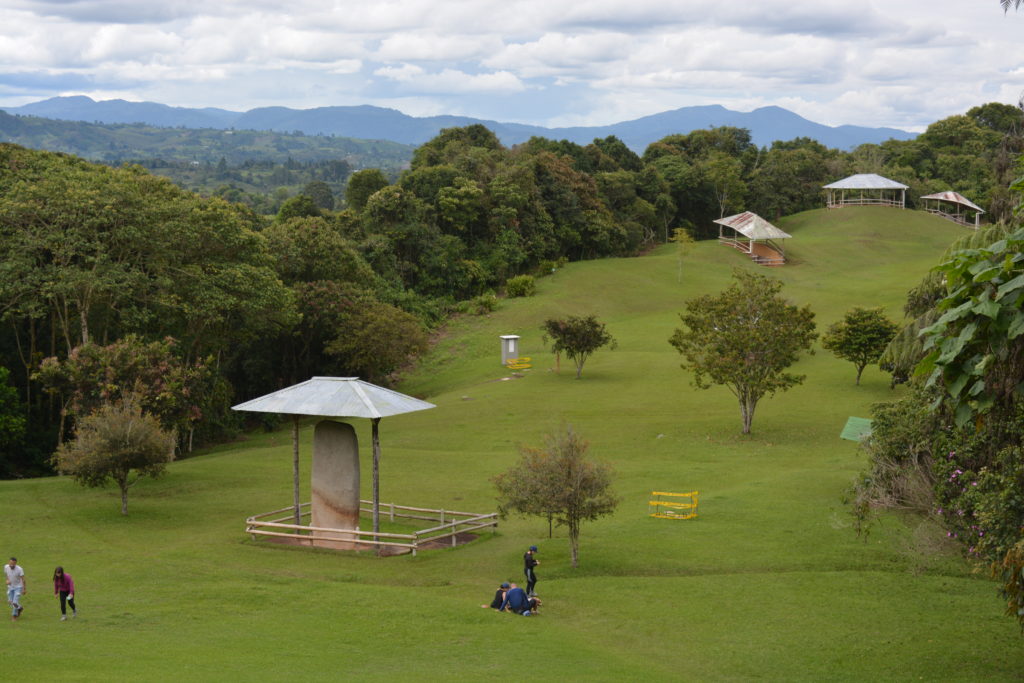
The second site is the Alto de los Idolos, this is larger than Piedras, again in beautiful countryside. Here there are a number of statues of caimans and also one of the tallest statues standing a seven metres.
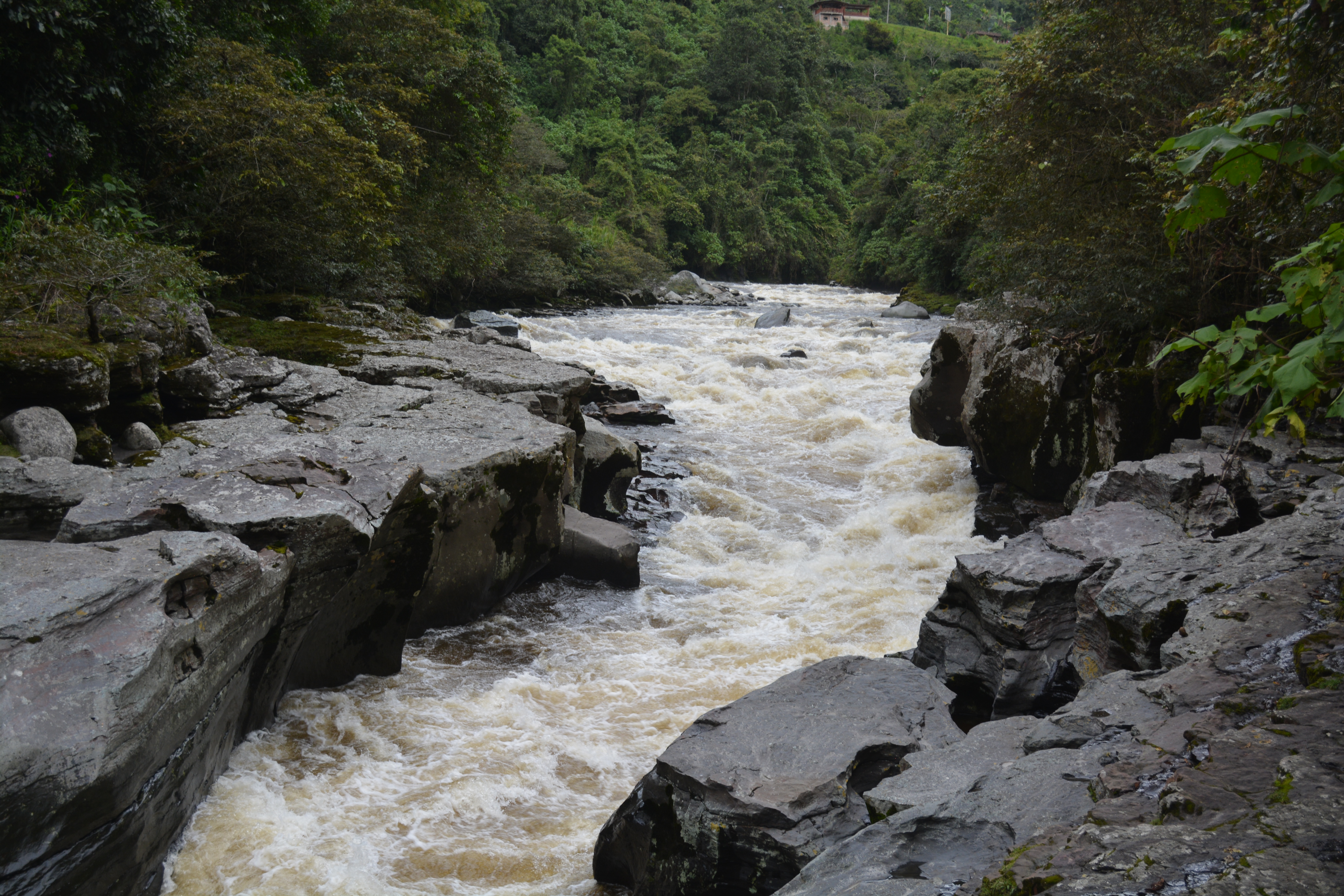
The tour was completed by a second set of waterfalls at Salto el Mortiño and a set of rapids on the Magdelana River.
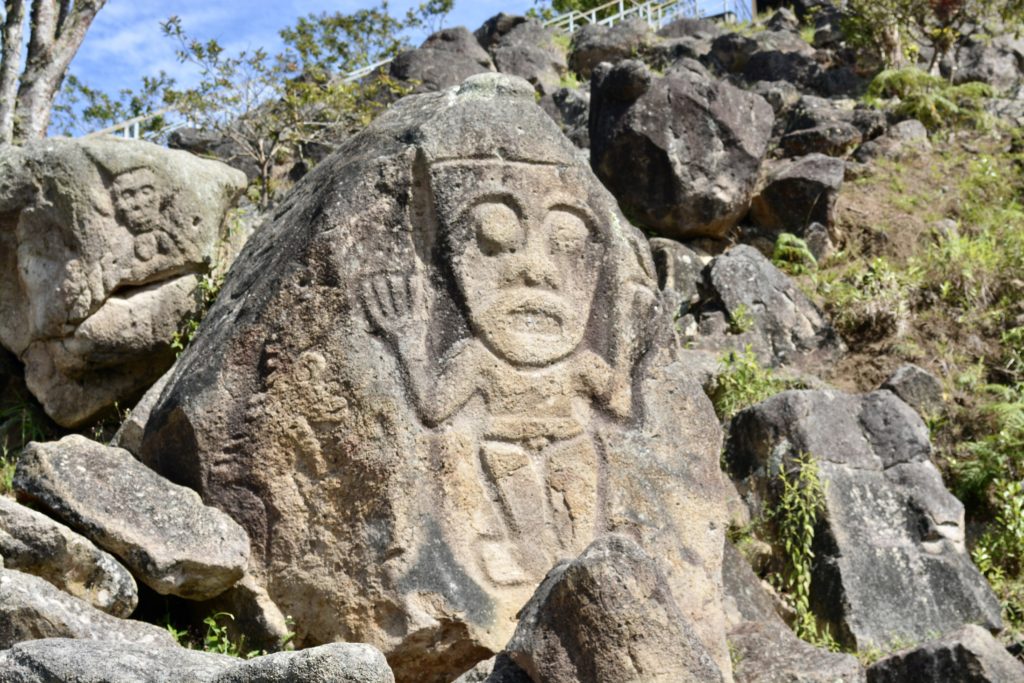
Day two we visited the nearby sites of Chaquira, some very old rock carvings pre dating the San Agustín statues and the unique painted statues at El Purutal. Both are well worth making the effort to visit as are unique and unlike any of the other archaeological sites.
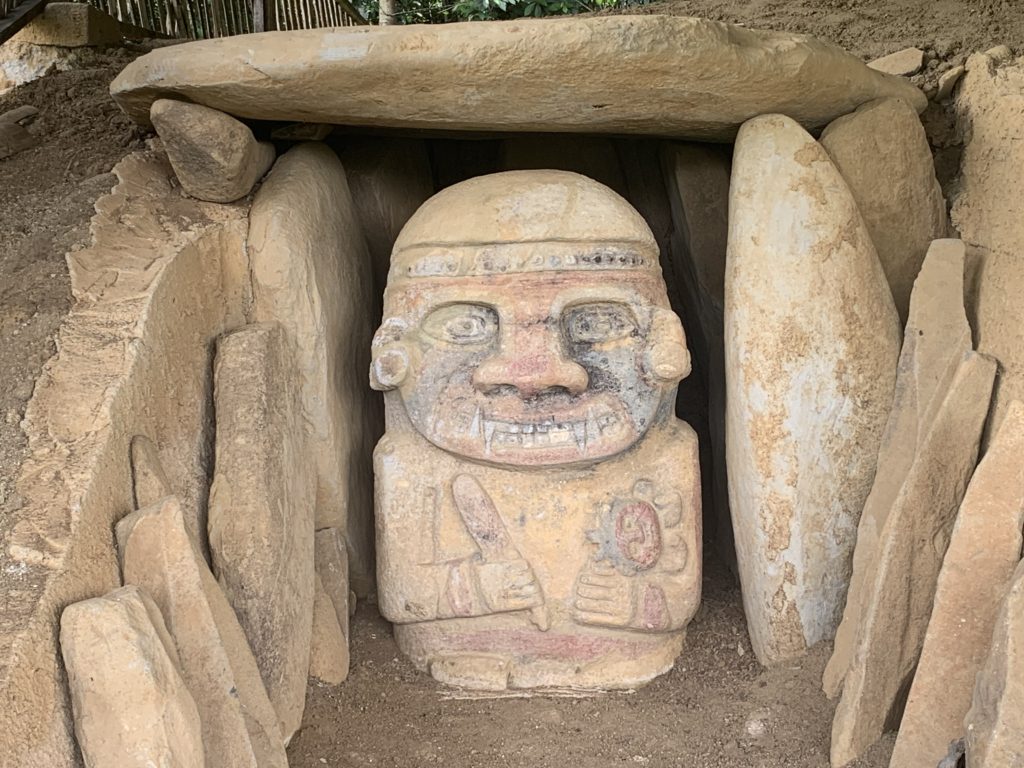
Finally we visited the main site just outside of San Agustín. Here there is a very well curated museum that provides a decent story of what is known of the San Agustín statues, and also include a number that have been recovered from earlier tomb raiders and thefts from across the world.
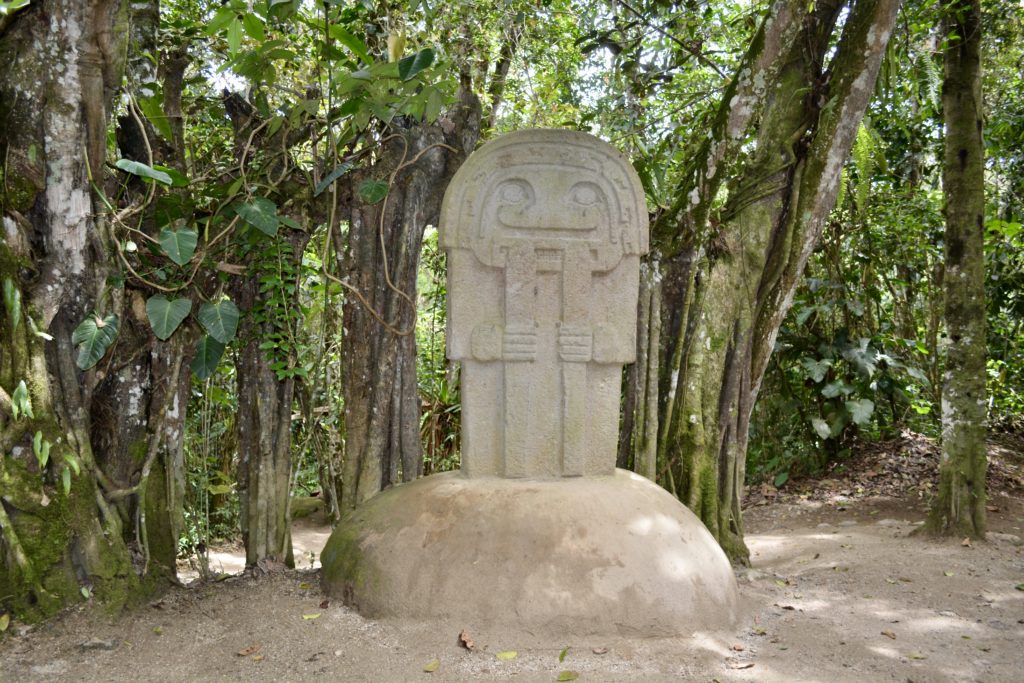
The park itself starts with a woodland walk with about 30 statues set about 20 metres apart. Each statue is now well presented and protected by a metal roof supported by bamboo polls. The statues are of both people and animals. In the woodland there are lots of beautiful birds and many different varieties of tree.

Moving into the park there are three main set pieces Mesita A, B and C. Mesita B contains the famous bird and also the triangular shaped face, while Mesita A has the tallest statue and C has another big reproduced statue with prominent incisor teeth.
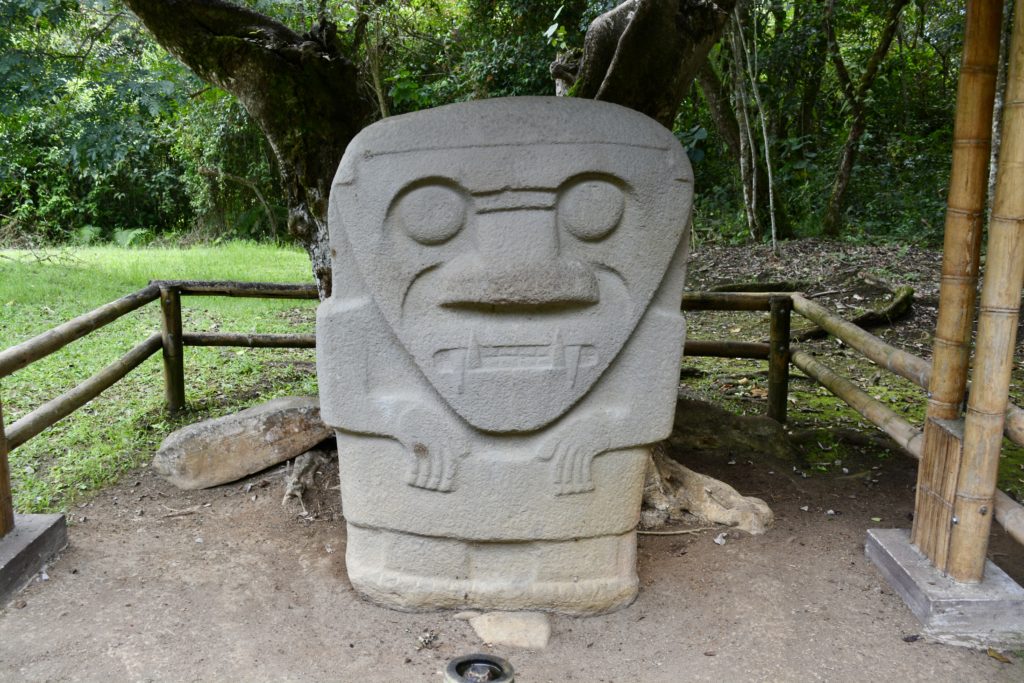
Beyond the three Mesitas is the source of the Lavapatas where the water flows over statues carved in the rocks. From there there is a final site the Alto de Lavapatas, which has yet more great views and also a double headed male figure to compliment the female figure in Alto de las Piedras.
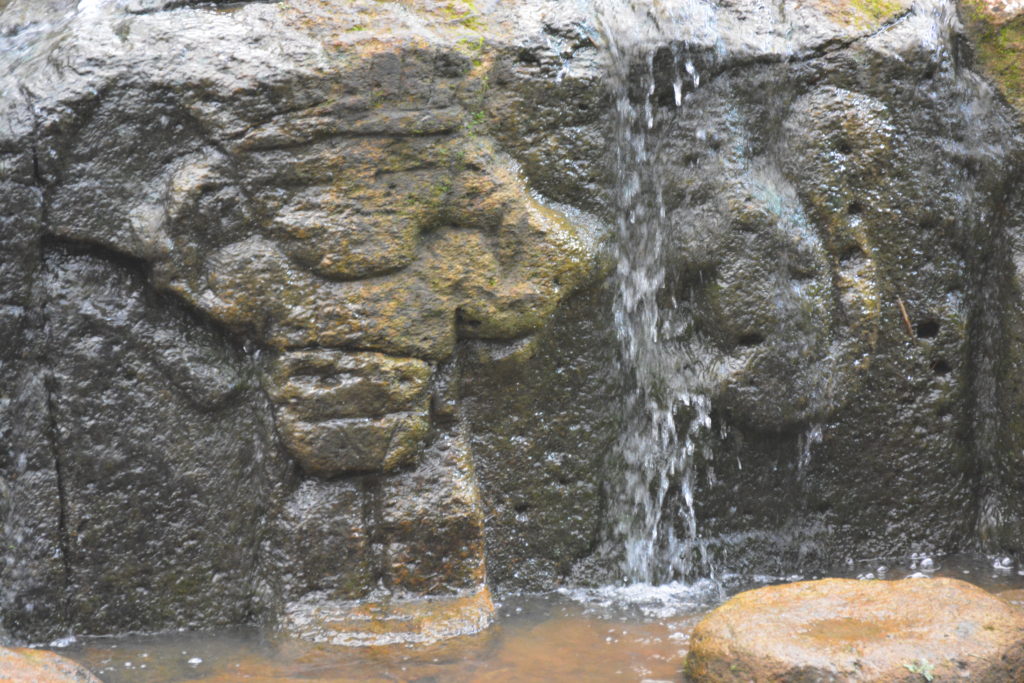
In San Agustín we stayed in a wonderfully presented hotel, Casa de Francois, set on a hill just outside the main town in beautiful grounds, with individual chalets complete with verandas and hammocks. The food, and the bread too was also very good.
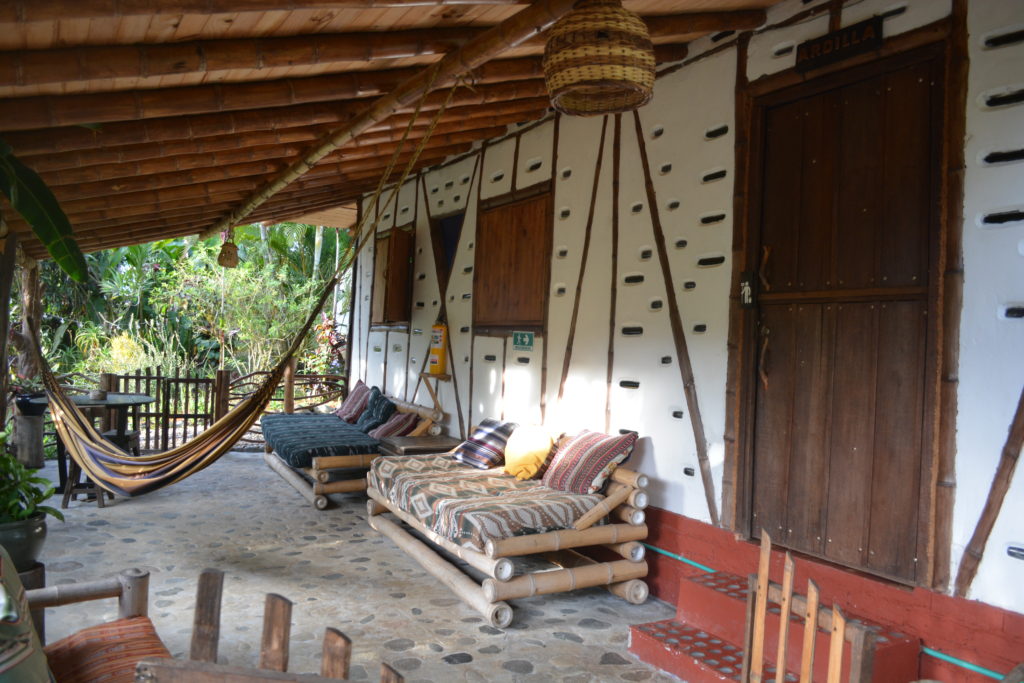
On Calle 6 in San Agustín, there are a number of artisan shops, however what makes this street much more interesting is that the shops also include workshops where many of the bags, jewellery, leather goods etc. are made. This makes for a pleasant change as so often the artisan products are mass produced in factories on the other side of the world.
Colombia’s second archaeological UNESCO World Heritage Sites is Tierradentro, which is much more remote than San Agustín and as a consequence receives many fewer visitors. The journey from San Agustín involves three or four changes of bus / collectivo and because the final leg is to a remote small town to which transport is infrequent we decided to break the journey in Garzon. To get there we took the regular collectivo to Pitalito and then another one to Garzon. Both legs of the journey went smoothly and we were in Garzon in time for lunch. Garzon is a typical working Colombian town, so doesn’t see many international visitors, but it did have some of the best coffee, in the Khave coffee house and hotel, we have had in Colombia, which is quite an accolade.
From Garzon our next destination was La Plata, some two to three hours away, the other side of a large dam on the Magdelena River. One of the twins we passed through on the was was Gigante, so named for having a very large ceiba tree in the middle of its town square. Very sadly a large part of the tree died in 2021.
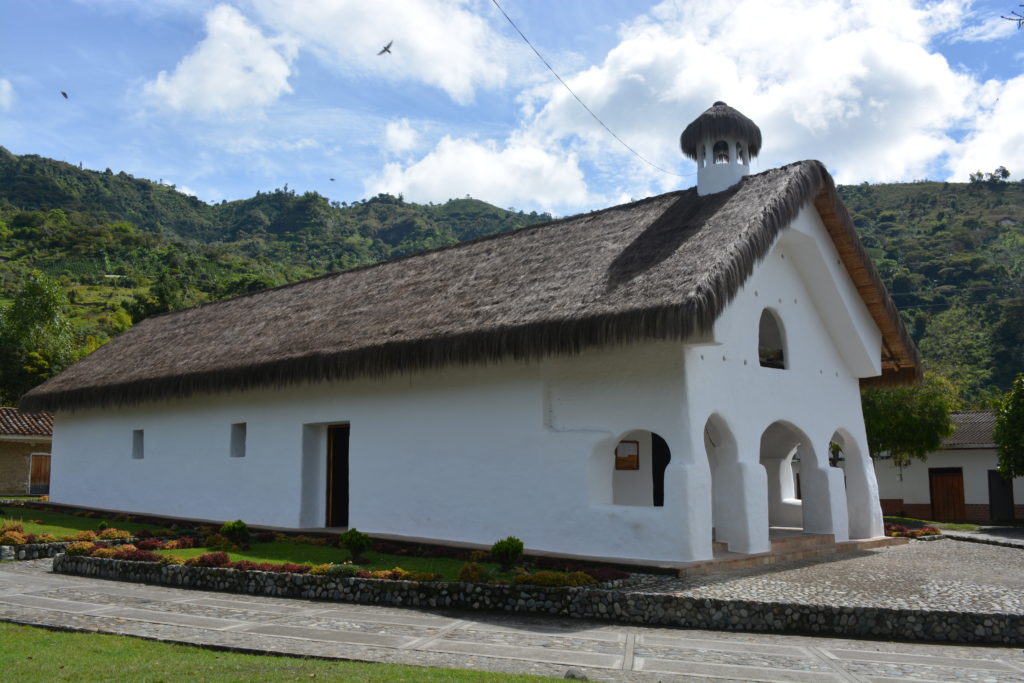
Finally from La Plata we took the last collectivo to San Andres de Pisimbala the nearest settlement to the Tierradento Archaeological Park. There we stayed in a small hotel called La Portada, run by Eva and Leonardo, who also provides guiding services and lots of local information.
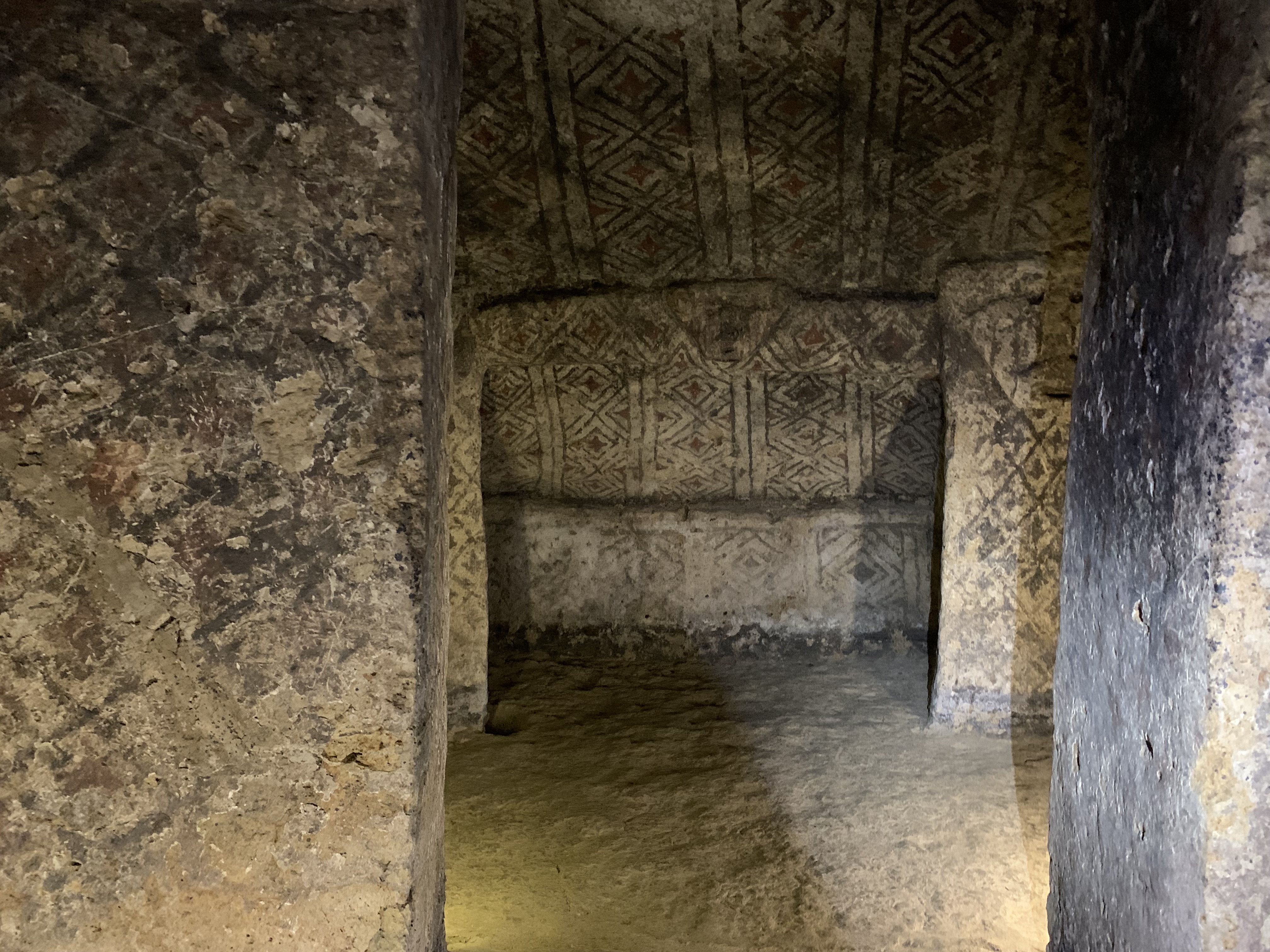
The Archaeological Park contains a large number of tombs and some statues spread around the surrounding countryside. To visit them all involves a 14km circuit up and down the surrounding hills and valleys. While it is possible to do it all in one day, it is best to split the walk in half, that way you can spend more time inspecting the various tombs.
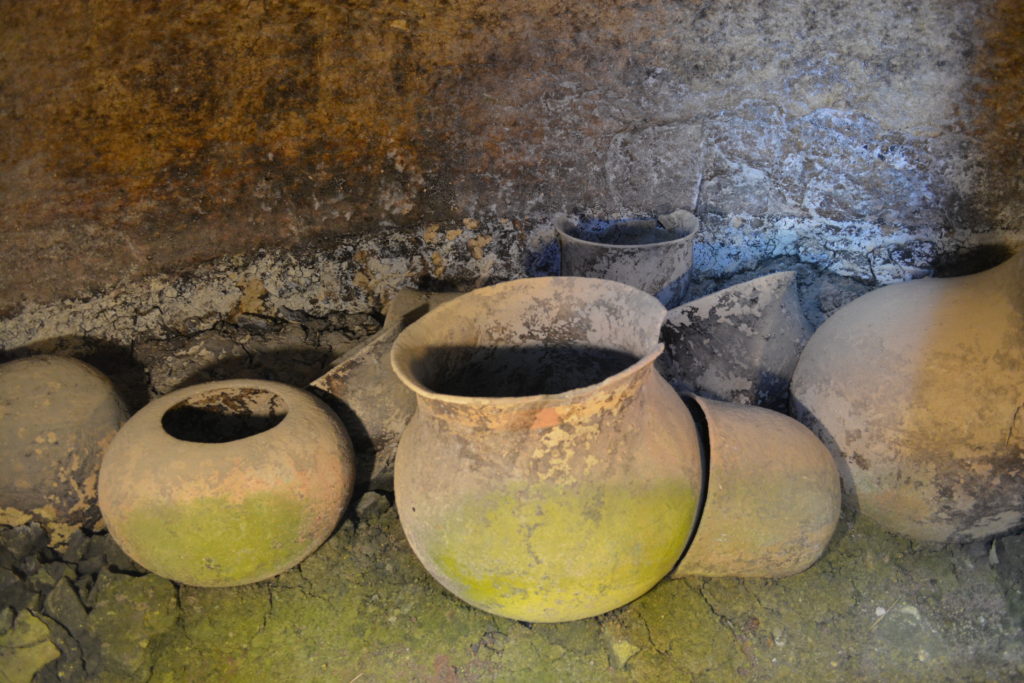
From the entrance to the Park, the first set of tombs in a reasonably steep climb on a well made path up 1,500 metres to Alto de Segovia, where there are about 14 tombs that are open to the public. A couple of them have some paintings inside, and also there are some original funeral urns too. Other tombs have less painting through either damage from flooding or tomb raiders. The guard there, Jesus, was particularly helpful in getting you down into the tombs, which often have very steep and uneven steps.
The second site is Alto de Duende, where there are 4 tombs open to the public. The path from Segovia and then onto the unmade road beyond Duende is very muddy. However it also passes through a working coffee farm where we saw them harvesting the coffee cherries and pealing them in the traditional grinding machine.
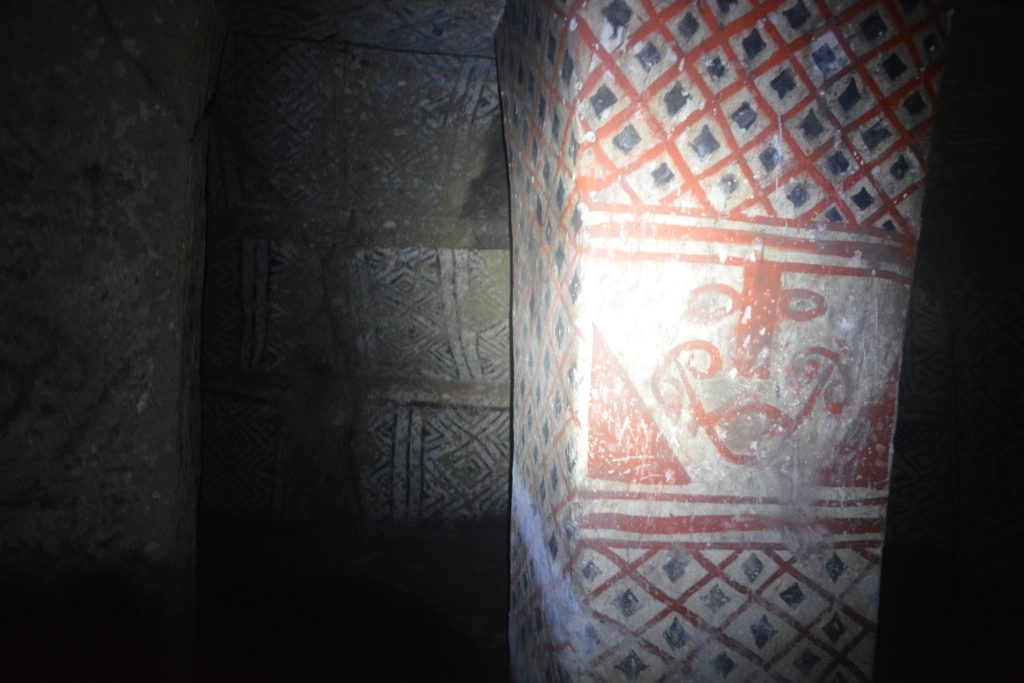
Beyond Duende and before reaching San Andres is El Tablon, a collection of statues, similar, but also noticeably different in style to those in San Agustín.
The second days walk takes you from La Portada quickly up the mountain side to Alto de San Andrés, where there are 4 tombs open to the public, one of which is painted and comparable to those at Segovia. The others have evidence of paintings but are not so well preserved.
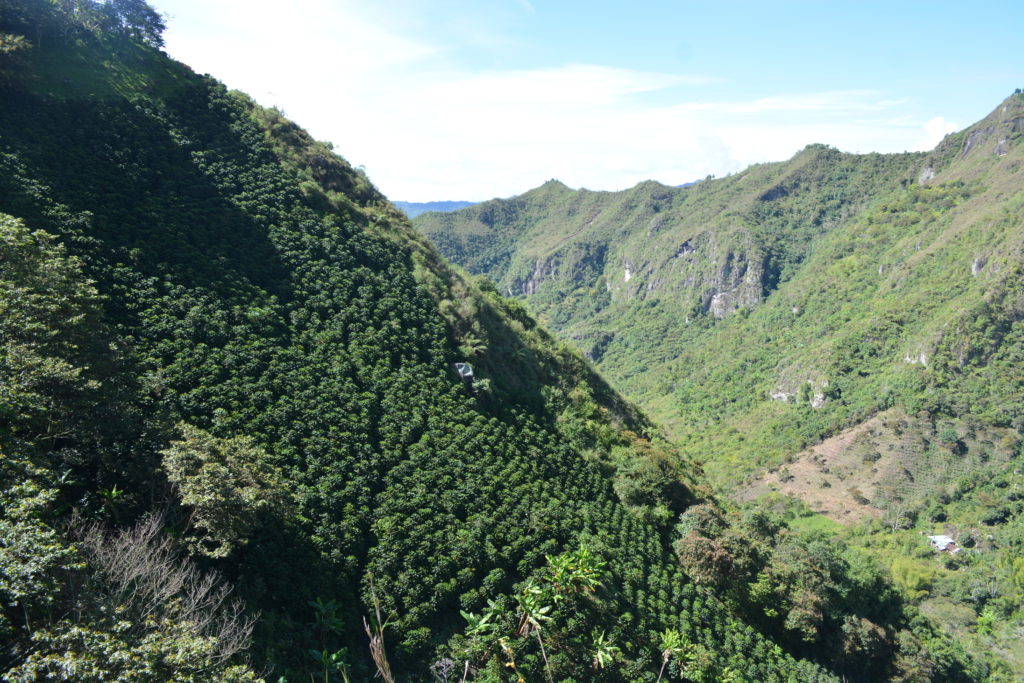
From San Andrés the walk follows the valley and then climbs up to Alto de Aguacate at the top of the hill. The views throughout are stunning, starting with many coffee farms and then panoramic views over the surrounding countryside and Izna. Many of the tombs at Aguacate have been extensively raided and also flooded so the paintings are noir so well preserved. However there is evidence of fragments of paintings and also one of the tombs has multiple chambers, rather than just the set of three pillars. It is then a steep climb down to the Park Entrance and the recently well curated museum.
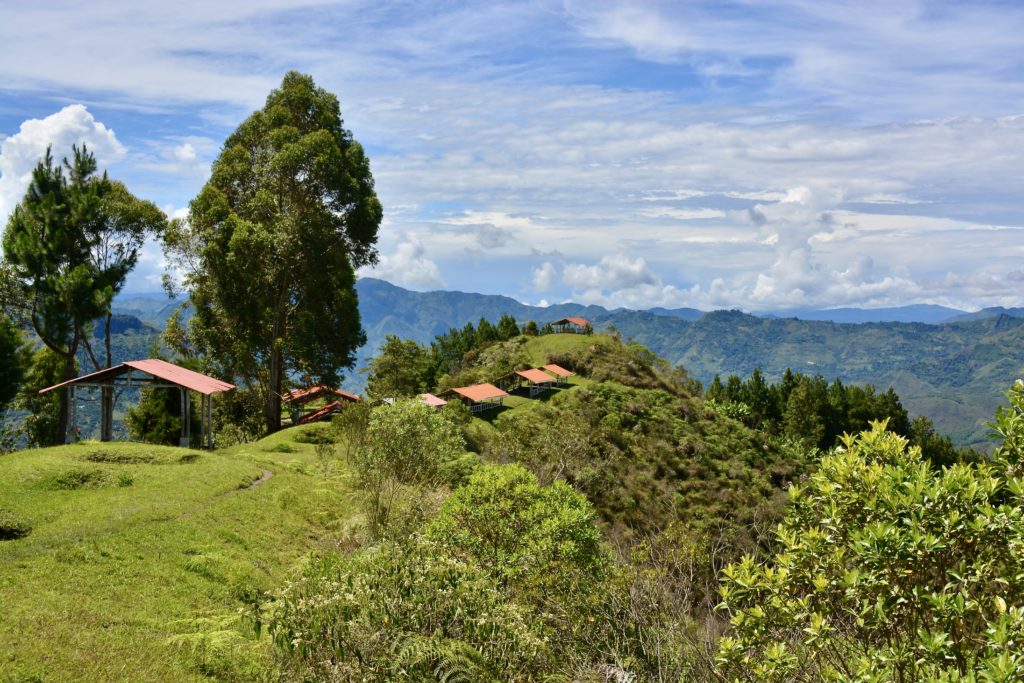
Dates: 25th May to 6th June 2022
